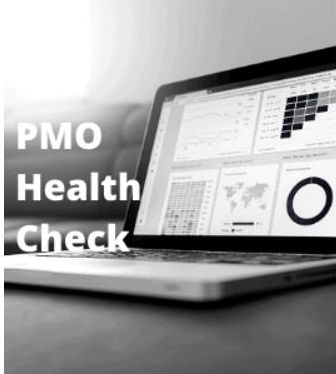
Implementing a Successful Project Management Office (PMO)
Project management has been around for decades and possibly for centuries. However, the most  significant contribution to the discipline/science of project management was brought by the Project Management Institute (PMI©) which was founded in the 60s. What organizations of all kinds were looking was efficiency in delivering projects and value. PMI© dictated how projects are managed and delivered and created the PMBOK (Project Management Body of Knowledge) that later became the standard of project management and approved by ANSI (American National Standards Institute). With all the advancements in the discipline of project management, organizations are still challenged in delivering projects/programs efficiently. A lot of conversations about the golden triangle emerged to emphasize the criteria for a successful project.
significant contribution to the discipline/science of project management was brought by the Project Management Institute (PMI©) which was founded in the 60s. What organizations of all kinds were looking was efficiency in delivering projects and value. PMI© dictated how projects are managed and delivered and created the PMBOK (Project Management Body of Knowledge) that later became the standard of project management and approved by ANSI (American National Standards Institute). With all the advancements in the discipline of project management, organizations are still challenged in delivering projects/programs efficiently. A lot of conversations about the golden triangle emerged to emphasize the criteria for a successful project.
As the panacea to resolve all project management challenges - PMO emerged to save organizations and help them succeed by focusing on many processes to expedite, control and guide what project teams should do to deliver efficiently. But no all PMOs are successful in accomplishing what businesses and organizations are expecting from them. The big question is, what entails to implement a successful PMO that add value and promotes growth for organizations.
This article is presenting a small subset of practices for implementing and maintaining a successful PMO based on  the Project Management Office Guidebook© from the PMO Global Institute©, this global institution has created the standards for PMOs to help organizations around the world to succeed in this endeavor. And, exactly, success just ahead. You can only be successful if you build and maintain a value-generator PMO, a profit center and not a cost center. But you need a game plan to get there and follow a robust framework to accompany you in the entire process and after the implementation as well. You will find a summary of the key processes and layers PMOGI© offers.
the Project Management Office Guidebook© from the PMO Global Institute©, this global institution has created the standards for PMOs to help organizations around the world to succeed in this endeavor. And, exactly, success just ahead. You can only be successful if you build and maintain a value-generator PMO, a profit center and not a cost center. But you need a game plan to get there and follow a robust framework to accompany you in the entire process and after the implementation as well. You will find a summary of the key processes and layers PMOGI© offers.
The primary goal of a PMO (profit center machine) is to achieve benefits from standardizing and following project management processes, policies, and methods. And yes, you want a 100% success. For the office to be most effective, it should embody the organization's culture and strategy. The popularity of the office has increased, as more companies with PMOs have received returns on investment – money.
A PMO should deliver noticeable value to organizations, the big question what kind of value must be delivered. For the PMO to be successful PMO, the following steps should be done and assessed. Firstly, the PMO organization must closely analyze the strategic vision and objectives of the performing organization, in another word – the business. That means, it is required the participation of the organizational leadership. Does the organization have a strategic plan? What are the current and future organizational aspirations? If you can get the result of a SWOT (Strength, Weaknesses, Opportunities, Threats) analysis it will be great. The PMO leader should wear the strategic hat, without this vision and mission, PMO will never be successful. If you follow PMOGI© framework, the foundation layer gives all what you need to start with the right foot. Special attention should be in the “Business Objective” process. That is the backbone of the framework. It is the key process of the foundation layer.
We know, the PMO should deliver strategic initiatives, now, the PMO team should clearly identify what are those business strategic initiatives. Focus on adding value projects and initiatives. Validate these initiatives with organization’s leaders to understand their aspirations and strategic thinking. Surely by this time you should 
have the required input to start your planning and work, of course, from the PMO perspective, now it is your turn.
- The results of this analysis should be sufficient to start with the right foot bringing recommendations and actions the company. The next step is to work with PMO Health. Check. This process should ask key questions such as the following:
- How does the PMO engage with the business strategies and alignment?
- What communications process is being used?
- How is project governance managed, controlled, and mentored?
- What deliverables are required by the current PMO processes?
- How are issues and risks managed and reported within projects and across the portfolio?
- How are projects clustered and categorized across the business?
- Which projects and PM’s have a record of success?
- How well are projects mobilized?
- How strong are the business cases across projects?
- How are lessons learned dealt with?
- How well are resources utilized across projects?
- Which tools are used across the PMO, and how collaborative are they?
- How are new projects onboarded?
That is only a reduced list of questions, but they can be expanded to cover areas of the entire organization. The processed described in the article are only starting points toward the implementation or matured a PMO. The PMOGI© framework contains 26 processes for setting up a new PMO or mature an existing one. You will see articles describing these processes in future articles we will be publishing. Keep in touch with www.tpglobalbusinessconsulting.com for more information.
You cannot do this alone, reach out to www.tpglobalbusinessconsulting.com/contacts for an assessment.

